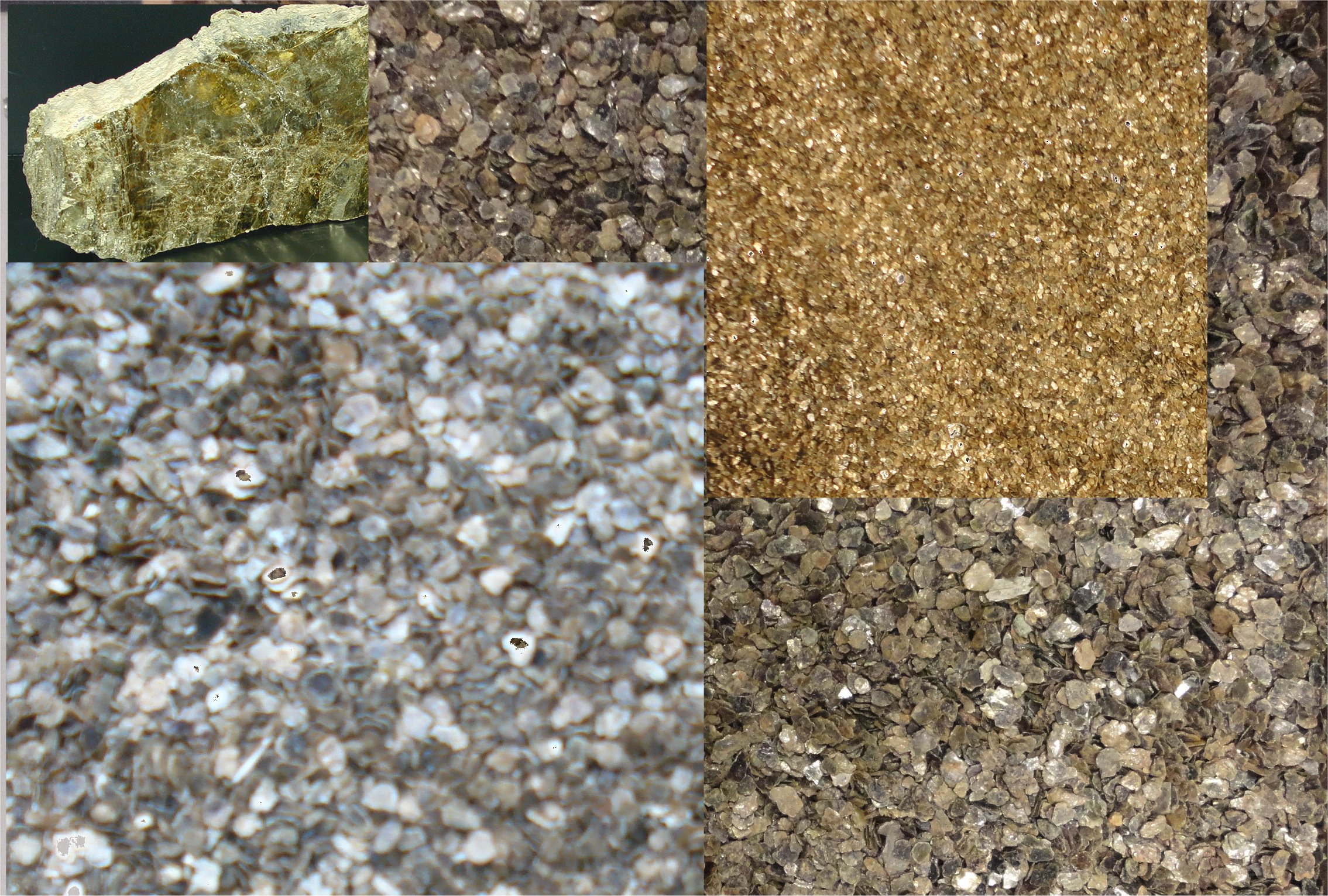Vermiculite Dataset
Department of Electrical and Computer Engineering, University of São
Paulo (USP)
São Carlos, Brazil
Download the texture dataset

Department of Electrical and Computer Engineering, University of São
Paulo (USP)
São Carlos, Brazil

Material description
Vermiculite is a hydrated magnesium aluminum silicate mineral which
resembles mica in appearance. It is found in various parts of the world
including Australia, Brazil, Bulgaria, Kenya, Russia, South Africa,
Uganda, USA and Zimbabwe.
Vermiculite is mined using open cast mining techniques where the ore is
separated from other minerals and then screened or classified into
several basic particle sizes. Every care is taken in mining operations
to minimize the impact on the environment and to restore land to its
natural condition when mining ends.
Vermiculite, when subjected to heat, exfoliates to form elongated
concertina like particles which are lightweight, incombustible,
compressible, highly absorbent, and non-reactive. Exfoliated vermiculite
particles can have high cation exchange capacity and their surface
chemistry may be modified.
Exfoliated vermiculite is used in a wide number of markets including
construction, industrial, horticulture and agriculture.
The commercial value
of vermiculite depends on |
Dataset descriptionLighting
conditions (for image capturing) TC3C3_I4.JPG = LED lamps - Class 3 - Image 4 The original color images (700 MB) are ready for download also. |
|
ApplicationsMost vermiculite is used in its exfoliated form. Exfoliated vermiculite possesses a number of useful attributes. Aside from its very low density, it has low thermal conductivity, is non-combustible, odorless, thermally stable, sterile and insoluble in water. HorticultureVermiculite is widely used as a component of potting mixes for plant propagation. In this capacity vermiculite aids aeration and water retention. Fire ProtectionVermiculite may be combined with Cement or Plaster and other materials to manufacture spray-applied fire resistant coatings for use on structural steel. RefractoriesWhen mixed with silicates and other binders, vermiculite is used to manufacture insulating boards for use in the aluminium industry and other refractory applications. Friction LiningsVermiculite is now used extensively in the friction lining industry as a safe alternative to asbestos.
|
Method for image capturing:
Fig. 1 - Fluorescent Lamp (TC1) Fig. 2 - LED Lamp (TC3)
|